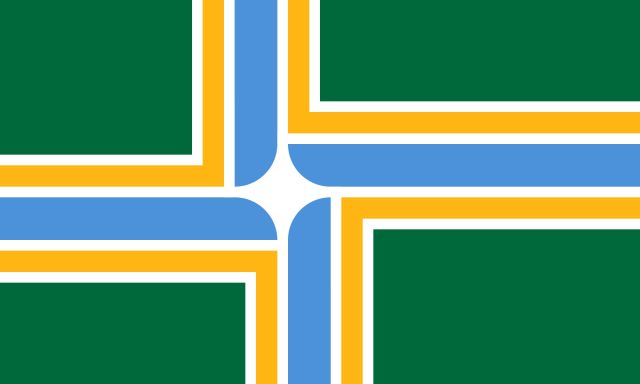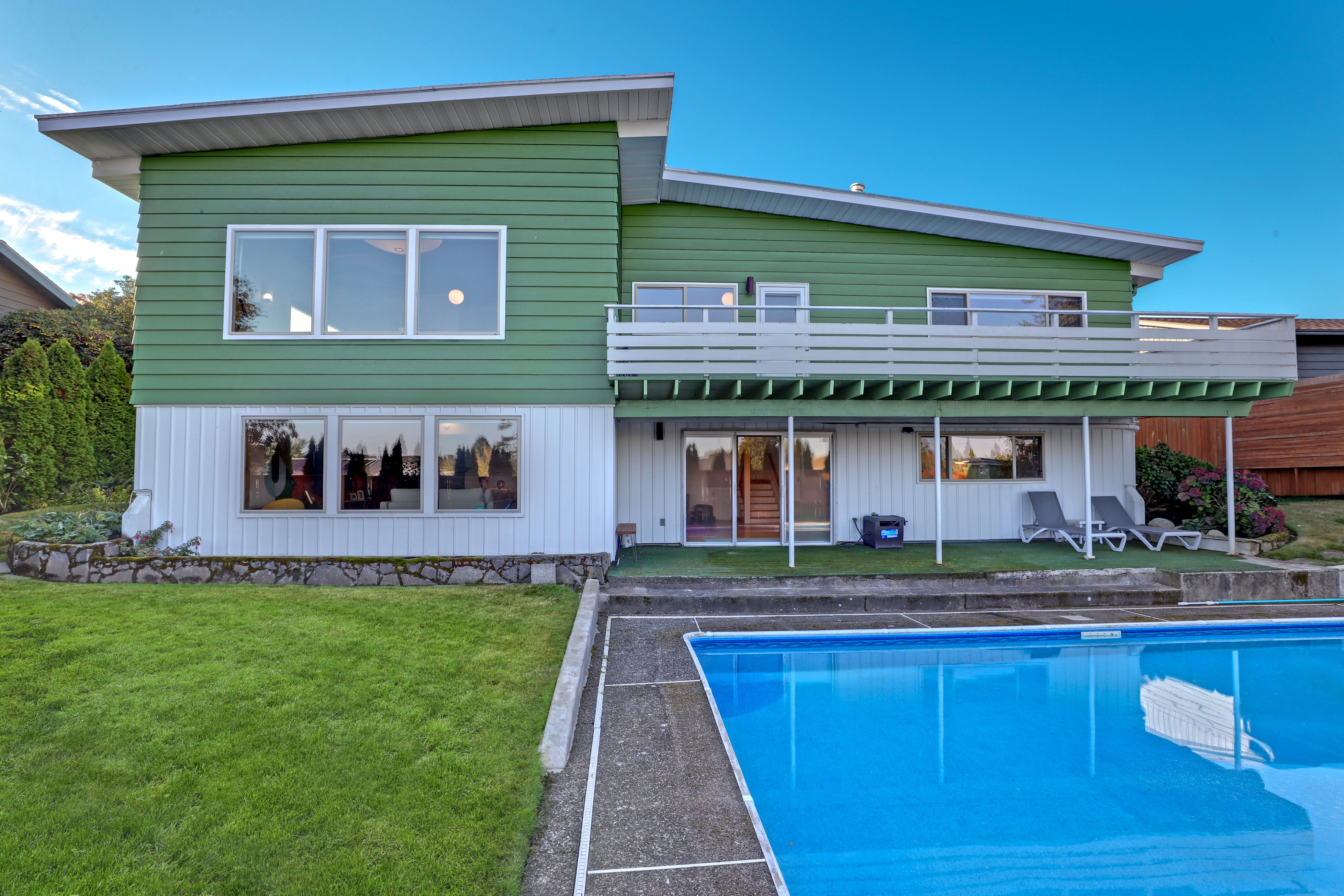How Studying Design Turned Roman Mars into a Pathological Optimist

"The next big thing I’m really curious about are self-driving cars," says Roman Mars. "I think it’s going to be the biggest change in cities."
Image: Courtesy PRX
Roman Mars thinks deeply about things most of us barely notice. Toothbrushes. Sell-by dates. Office chairs. Trash collection. Those inflatable tube guys. As creator and host of the podcast 99% Invisible, the onetime plant geneticist spends his days making audio gold about architecture and design, from suburban McMansions to political logos.
Now Mars and other producers from the podcast network Radiotopia—including the voices behind Criminal, The Allusionist, The Memory Palace, and Mortified—are setting out on a string of live shows, including a Portland stop on Monday, May 8 (tickets were just added!). In advance of his Portland visit, we talked with Mars about making an audio podcast into a live stage performance, what makes Portland's city flag so beautiful, and why studying design gives him reason for hope.
One of my favorite recent-ish episodes was about unpleasant design and hostile architecture. Can you talk more about that one?
That one really resonated with people. The concepts of unpleasant design show up everywhere. I used to take tons of photographs of skate stoppers, those little metal brackets—sometimes they’re decorative, and sometimes they’re trying to blend into the environment, but basically they’re so you don’t grind on the concrete on your board. Everyone has experienced armrests on benches, at airports in particular, where you really, really want to lay down and can’t. My favorite [episodes] are the ones where you learn a specific thing, but that function a bit as a guidebook for you to go around the world and begin to see these things in different ways, and see the variations and interpretations in your neighborhood. In London, they’ve made the [anti-sleeping] spikes very spiky—they’re very purposely hostile. In Oakland, they make them like doorknobs—they look like the decorative tops of fences, so they don’t give the same “you shouldn’t be here” vibe, even though they serve the same purpose.
I like starting that discussion, and recognizing that design is all about choices, about trying to guide the use of things. I celebrate things that simplify use and guide use. But there’s a point when the city is making these choices for us, and we have to ask: do those choices violate our humanity? Is skating all that bad? Maybe there’s a balance between having an active use in ways that we didn’t anticipate and the concrete getting chipped a little bit. I mean, I’m the father of twin boys of 10, and I don’t love public environments that are used in ways for drug activity. But the level of control and what it says about us is really important.
You have another episode about CD longboxes, and how the Rock the Vote petition included in REM’s Out of Time helped lead to the passage of the “Motor Voter” bill. What makes that episode one of your favorites?
It’s very clearly rooted in package design, which is pretty much about commerce—maybe a little about aesthetics and beauty. And for it to have this cascade effect that led to an election victory? It shows that these designs really do matter. They do motivate people, and they do change things. I remember having that longbox. I’m 42, so Out of Time came out when I was, like, 16. I remember that [Rock the Vote postcard] on the back of it. That’s a type of hidden history I drool over.
You and other Radiotopia producers are going on the road. How do you transform a podcast into a live stage show?
There are elements I like to keep like the podcast experience. There are times I sit at a desk and talk really quietly into a microphone, like you’re listening in your earphones—it should feel both intimate and shared. The pieces we are putting together are really meant to be seen live. To me, as a student and practitioner of good design, I want the thing to make sense in the place where it is. I don’t want to translate a podcast to the stage. I want it to be a real stage experience. When I’m pressing buttons on the stage, it has a behind-the-scenes feel to it. Instead of me being inside your head, you’re inside my head.
What will you be doing in Portland?
The 99% Invisible piece for the Portland show is a 20-minute song and story with members of the Decemberists and author Jon Mooallem. It’s a good human story about the importance of infrastructure. [Laughs.] That’s the most boring way possible to describe it. It’s a really good human story about a tragedy, and how one woman does something extraordinary and unites a community in a really cool way. It’s a super sweet story, and you feel the power of music. It gives me goosebumps.
You have an entire episode devoted to flag design, and Portland’s flag gets called out as a sterling example. Why?
In your community, there is a fellow named Ted Kaye who is a longtime flag enthusiast and member of the North American Vexillological Association and started the Portland Flag Association. He was just a hero of beautiful flags—the vexillionaire extraordinaire. He knew the right people to make something good happen and was really committed in the beginning that it have a good flag design. So you just have the good fortune of having an extremely active vexillological community in Portland who cared about these things. Ultimately, design is about people, and you had the right people caring about it.
What makes Portland’s flag so successful?

What makes this flag so "beautiful" and "distinctive"? Roman Mars can tell you.
Image: City of Portland
It’s a beautiful flag. It’s strong and distinctive. It has a little bit of a geographical element, with the rivers meeting. The offset cross is unusual but recognizable. It has the great elements of design, which is that it looks and feels like a legit flag. Good design is like a perfect pop song—it has all these aspects you expect, but there’s just a little bit of tweaking that makes it something really special. It lays down expectations but then tweaks them slightly to make it interesting. It feels like Portland to me. And people love it. It’s trickling out and being used by sports teams and in tattoos and T-shirts and stuff. You know it’s really taken off when it ends up being modified for personal use.
Is the flag great because Portland is great, or did a great flag make Portland great?
There’s a feedback loop—a community will love itself more if the flag is good. There’s something about having a good brand and a good style that anyone can get behind. It sounds vapid to talk about your city as a brand, but I just mean you have an affinity for what you’re doing. Portland’s flag has all these things that are right, and none of what I would consider to be the bad Portlandia tropes. It has none of that crap.
You told Mother Jones that “studying design can make you pathologically optimistic.” How so?
I was kind of an angry punk kid, and I hated systems and hated everything. One of the ways that thinking about design and architecture has changed my general being and general bearing is that when you take the time to examine all the thought and care that goes into things, you realize there are a lot of people looking out for us in interesting ways. They’re not just trying to manipulate us; they’re not just trying to get us to buy things. They’re trying to make things easier and good, and they really care about their craft. It’s heartening to study and witness that. That was the thing that really came across to me as I began to examine all the thought that goes into things that most people don’t think about. When you’re aware of that care and detail, it makes you feel good about the world.
What are you thinking about now?
The next big thing I’m really curious about are self-driving cars. I think it’s going to be the biggest change in cities. Part of me weeps for the fact that we probably just got to this critical point where people are deeply committed to public transit and we might abandon that altogether for self-driving cars, and I think that would be a terrible mistake. And part of me is like, we’re about to see the greatest reclamation of land use, with no parking needed [for self-driving cars], since the invention of skyscrapers, and that could be amazing. I am so intrigued by it.
Generally, I think the world has become a better and better place for most people, health-wise and living standard-wise, and so I generally have been able to recognize that trajectory a little bit more and hope that we continue in that same direction. These big [developments] don’t necessarily make things better. But I just feel more hopeful, because I’ve seen the history of how people really do seem to care about things, and there’s no evidence that they care any less—I think they probably care a little bit more.
Radiotopia Live
8 p.m. Mon, May 8, Aladdin Theatre, $39.50 (VIP packages available)




